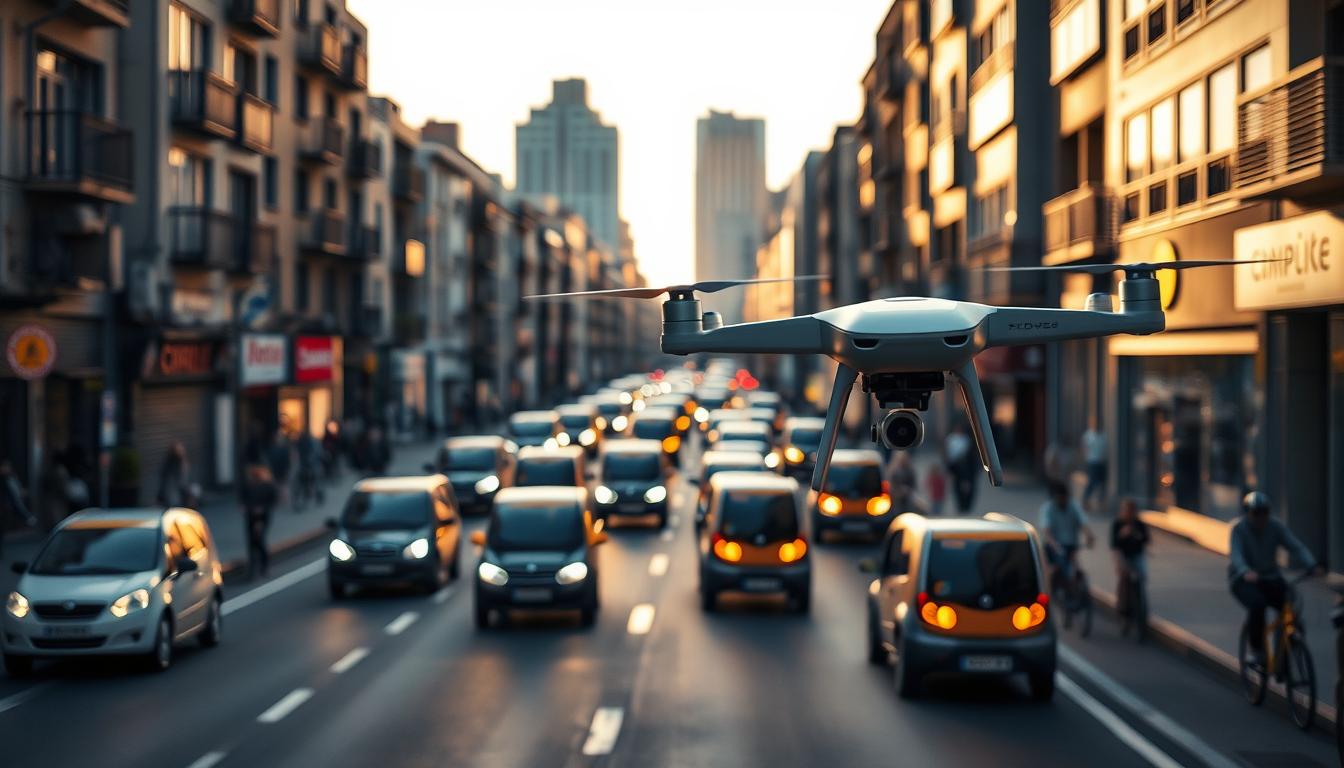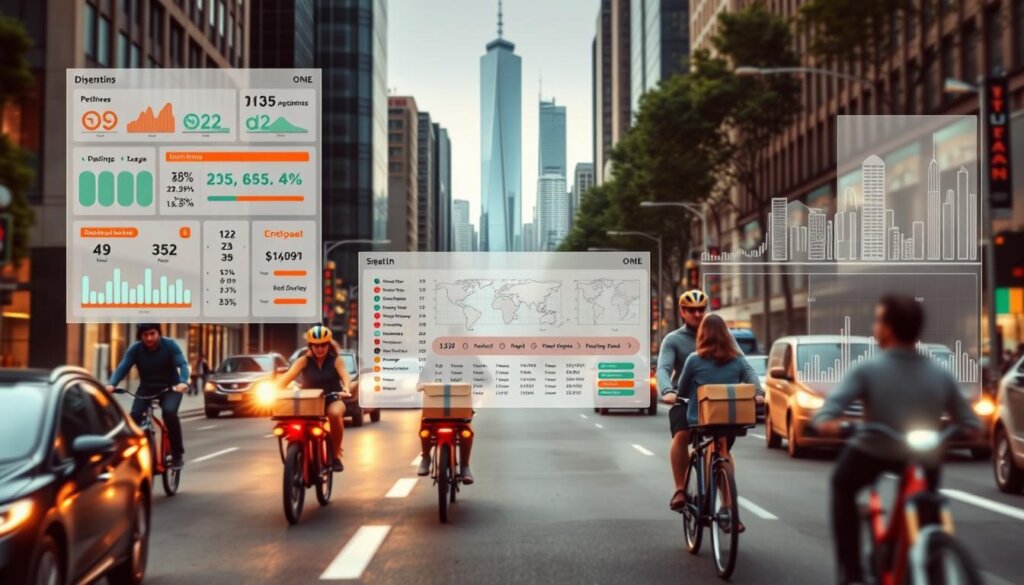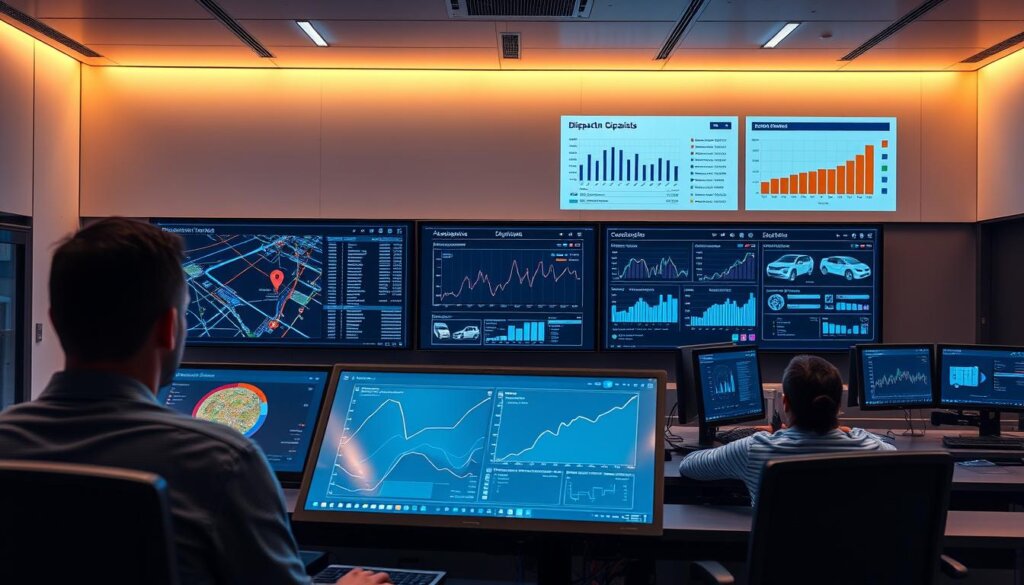Imagine a bustling Friday evening at a neighborhood coffee shop in Austin. Regulars flood in for their post-work lattes, while delivery apps ping nonstop with orders from nearby apartments. The barista team scrambles – milk frothers overheat, and couriers crowd the pickup counter. This chaos isn’t just a bad night; it’s a missed opportunity to turn local excitement into loyal customers.
Scenes like this play out daily across the U.S. as hyperlocal delivery reshapes consumer habits. The sector exploded from a $1.7 trillion market in 2020 to a projected $5.1 trillion by 2030. Why? Because when someone wants tacos at midnight or printer ink before a Zoom meeting, “soon” isn’t good enough anymore.
Businesses mastering this now-or-never economy don’t just survive rush hours – they thrive on them. Through real-time data and smart routing, they transform potential meltdowns into moments that wow customers. Let’s explore how your operation can leverage these tools to stay ahead of local demand curves.

Key Takeaways
- The hyperlocal service market is growing 14.9% yearly, hitting $5.1 trillion by 2030
- Instant delivery expectations require smarter resource allocation strategies
- Real-time analytics prevent operational bottlenecks during demand surges
- Automated dispatch systems boost efficiency while reducing costs
- Customer loyalty hinges on consistent service during peak periods
- Scalable frameworks adapt to neighborhood-specific buying patterns
Introduction to the Hyperlocal On-Demand Delivery Landscape
From midnight snacks to printer ink emergencies, today’s shoppers want items now – not tomorrow. This craving for instant satisfaction fuels the hyperlocal delivery boom, where orders reach doorsteps in 20-30 minutes. The U.S. market alone will grow 19.4% yearly through 2034, with Australia close behind at 26.1%.
When COVID-19 locked doors, delivery services became lifelines. Pharmacies, grocers, and even bakeries adapted overnight. What started as necessity became habit – 68% of customers still prefer quick deliveries post-pandemic.
Modern platforms act like digital matchmakers. They connect you to nearby stores through apps that prioritize speed. A coffee shop three blocks away? Your latte arrives before it cools. Need batteries? The corner store has them en route in minutes.
Success here isn’t just fast drivers. It’s about smart partnerships and real-time adjustments. Popular pizza spots might station dough preps near busy offices. Flower shops stock extra bouquets before Mother’s Day rushes. This dance between businesses and tech creates what shoppers love: reliable convenience without the wait.
Fundamentals of Hyper-Local Demand Management
Picture your favorite neighborhood bakery suddenly swamped with online orders during a lunch rush. This scenario reveals the heartbeat of hyperlocal success – balancing speed with precision. Unlike traditional models, these operations thrive in tight geographic zones where every minute counts.

Smart businesses start by mapping local habits. They track when office workers grab coffee, how weather affects soup orders, or why yoga studios need smoothie deliveries by 10 AM. This micro-market intelligence helps predict exactly when and where customers will need items.
The secret sauce? Dynamic resource planning. A pizza shop near a stadium might triple dough prep before games. A pharmacy could station extra drivers near retirement communities on prescription refill days. These moves turn chaos into calculated efficiency.
Advanced data tools spot patterns humans miss. One flower shop discovered wedding planners often order lilies 47 hours before events. Now they prep inventory when those alerts hit. This proactive approach keeps delivery times under 25 minutes – even during surges.
Successful systems build in flexibility. They maintain backup riders for surprise rainstorms or viral TikTok trends. One grocery chain uses real-time traffic updates to reroute drivers around construction zones, ensuring fresh produce arrives crisp.
At its core, hyperlocal management connects community needs with smart logistics. It’s not just moving products – it’s mastering the rhythm of local life.
The Hyperlocal Delivery Ecosystem: Key Components
Behind every smooth delivery experience lies a well-oiled machine of interconnected systems. Picture this: A customer taps “order,” and within seconds, four specialized tools spring into action like orchestra members following a conductor’s baton.
First up: store networks. These range from corner shops to tech-packed dark stores hidden in residential areas. A bakery might use its retail location by day and transform into a micro-warehouse for late-night cookie cravings. Smart placement cuts delivery times to under 30 minutes.
The Order Management System (OMS) acts as mission control. It checks real-time stock levels, routes orders to the nearest store, and alerts staff simultaneously. When three office workers order lattes from the same café, the OMS groups them into one efficient batch.
Next, Warehouse Management Systems (WMS) keep inventory razor-sharp. Sensors track milk cartons and coffee beans, auto-ordering supplies before they run low. During lunch rushes, the WMS guides workers to items fastest – no more zigzagging through aisles.
The Transport Management System (TMS) becomes the delivery quarterback. It analyzes traffic patterns, weather, and driver availability to create optimal routes. One driver might handle five neighborhood orders in a single loop, with live tracking updating customers every turn.
Finally, flexible fleet management adapts to local needs. Some businesses use dedicated drivers who know every street shortcut. Others share riders across multiple stores during slow periods. This mix keeps costs down while maintaining speed.
When these components sync perfectly, magic happens: Customers get their items faster, businesses save resources, and neighborhoods enjoy reliable service that keeps them coming back.
Exploring Diverse Hyperlocal Business Models
Take a local bookstore that transforms into a community hub by offering same-day delivery through neighborhood students. This creative approach showcases how hyperlocal business models adapt to unique market needs. Companies serving tight geographic areas typically choose between three core frameworks.
The inventory-led model works best for businesses prioritizing quality control. Think meal-prep kitchens stocking fresh ingredients daily. While requiring upfront investment in storage, it ensures consistent customer experiences. Tech-driven startups often prefer the aggregator model, connecting users with multiple nearby vendors without handling physical products.
Hybrid approaches blend both worlds. A craft brewery might brew core beers in-house while partnering with local snack vendors for combo deliveries. Operational flexibility shines through four primary delivery business models:
Dedicated fleets maintain brand consistency for established retailers expanding digitally. Pickup-only setups thrive in urban areas where customers value grabbing orders during commutes. The hybrid pickup/delivery model adjusts based on real-time demand – more drivers during rainstorms, self-service kiosks when sunny.
Service aggregators create win-win scenarios. A single app might connect users with pet groomers, mechanics, and tutors across three ZIP codes. This business model helps small providers compete while giving customers one-stop convenience. The right framework depends on your community’s rhythm and resources – there’s no universal solution in hyperlocal success.
Data-Driven Strategies for Managing Hyper-Local Demand Spikes
Picture a delivery app’s dashboard lighting up with dozens of orders within minutes – this is where smart systems shine. AI-powered platforms analyze multiple factors in real time: driver locations, vehicle types, and even road conditions. They automatically match each order to the fastest, most cost-effective option, like assigning e-bikes for short trips under 1km.
These tools don’t just react – they predict. By studying past orders, weather patterns, and local events, algorithms forecast when taco trucks near music venues will get swamped. One pizza chain uses this tech to pre-bake dough before concert crowds start ordering, cutting wait times by 18 minutes.
Machine learning makes these systems smarter weekly. They learn that office workers order 23% more salads on Mondays, or that rainy days boost soup delivery requests by 40%. This helps businesses prep ingredients and schedule staff accurately.
Dynamic pricing keeps operations smooth during rushes. When dessert orders spike at 9 PM, prices adjust slightly to balance demand. Off-peak discounts then lure customers during slower hours. Automated systems reroute drivers around traffic jams while updating estimated arrival times instantly.
The result? Neighborhood stores handle twice the volume without chaos. Customers get reliable service during peak times, turning rushed orders into loyal relationships. With the right data tools, every demand surge becomes a chance to impress.
Smart Dispatch Technologies and Real-Time Analytics
Delivery drivers in Chicago’s West Loop district glance at their dashboards – not for traffic updates, but live heatmaps showing exact customer locations. This precision defines modern hyperlocal delivery systems, where every second translates to customer satisfaction or missed opportunities.

Leveraging GPS & Real-Time Tracking
Advanced tracking tools do more than follow drivers. They create digital handshakes between stores, couriers, and customers. When a latte order pings a café’s tablet, the system instantly matches it to the nearest rider with insulated bags – all before the espresso finishes brewing.
Geo-fencing adds another layer of accuracy. Drivers automatically check in when entering a customer’s block, triggering status updates. Need proof of drop-off? The app captures digital signatures or OTP confirmations while tracking exact delivery coordinates.
Predictive Analytics for Faster Dispatch
Machine learning algorithms study neighborhood rhythms like detectives. They notice condo dwellers order Thai food 73% more on rainy Tuesdays or that gym-goers want protein shakes by 5:15 PM. This intel lets systems pre-position drivers before orders surge.
Real-time adjustments keep everything flowing. If a bike courier hits unexpected construction, the delivery platform reroutes others within seconds. Customers get revised ETAs automatically – no frantic calls to support teams.
These tools transform chaotic rushes into orchestrated precision. Restaurants handle triple the orders without delays, while customers enjoy reliability that builds lasting trust. In the race for instant gratification, smart dispatch isn’t just helpful – it’s the finish line.
Role of Technology in Hyperlocal Delivery Operations
Modern delivery thrives on invisible tech magic. Cloud platforms act as digital backbones, letting businesses scale up during holiday rushes or down on quiet Mondays. No more expensive servers – these systems grow with your needs, keeping costs predictable.
Powering Connections Through Cloud Tech
Local shops now rival big retailers using cloud-based tools. A family-owned pharmacy can manage 300 daily orders through the same software chains use. Real-time inventory updates prevent “out of stock” surprises, while automated alerts remind staff to restick bestsellers.
Payment gateways like Stripe and Square make transactions frictionless. Customers choose Apple Pay at checkout or split bills – options that keep carts full. Secure encryption builds trust, especially for first-time users nervous about sharing card details.
Building Customer Relationships
Smart CRM systems track preferences: “Maria orders oat milk lattes every Thursday” or “James tips extra during snowstorms.” Businesses use these insights to send personalized offers, turning one-time buyers into regulars. Delivery apps now suggest add-ons based on past purchases – think cookie pairings with afternoon coffees.
From GPS routing to supplier coordination, technology stitches together the hyperlocal fabric. It’s not just about speed anymore – it’s creating experiences that feel tailor-made for every neighborhood.
See how FieldAx can transform your Field Operations.
Try it today! Book Demo
You are one click away from your customized FieldAx Demo!
FAQ
What exactly is hyperlocal delivery?
Hyperlocal delivery focuses on transporting goods or services within a very small geographic area, often within the same neighborhood or city block. It’s designed for speed, convenience, and connecting local businesses directly with nearby customers.
How do businesses handle sudden demand spikes in hyperlocal delivery?
Companies use data-driven strategies like predictive analytics, dynamic routing algorithms, and real-time inventory tracking. These tools help optimize dispatch operations, reduce delays, and ensure orders are fulfilled efficiently during busy periods.
What are the key components of a hyperlocal delivery ecosystem?
The ecosystem includes local retailers, delivery partners, tech platforms for order management, real-time tracking systems, and payment gateways. Seamless coordination between these elements ensures quick, reliable service.
Can small businesses benefit from hyperlocal delivery models?
Absolutely! Hyperlocal models allow smaller shops to compete with larger retailers by offering same-day delivery, expanding their customer base, and reducing reliance on third-party marketplaces. Platforms like Shopify Local Delivery help streamline this process.
How does technology improve hyperlocal delivery operations?
Tools like GPS tracking, AI-powered dispatch systems, and cloud-based platforms enable real-time order visibility, route optimization, and automated payment processing. This reduces human error and speeds up the entire delivery process.
Why is real-time tracking important for customers?
Real-time tracking builds trust by letting customers monitor their orders from pickup to drop-off. It reduces anxiety about delays and improves satisfaction, as seen with apps like Uber Eats or Instacart.
How do predictive analytics help in managing deliveries?
Predictive analytics forecast demand patterns based on historical data, weather, or local events. This allows businesses to pre-stock inventory, adjust driver schedules, and allocate resources proactively—avoiding bottlenecks.
What role do cloud-based platforms play in hyperlocal services?
Cloud systems centralize order management, customer data, and payment processing. They scale easily during peak times and provide businesses with actionable insights to refine their operations.
How can retailers ensure quick delivery during peak hours?
Retailers partner with dedicated hyperlocal logistics providers, use micro-fulfillment centers, and implement surge pricing for drivers. This balances supply and demand while maintaining delivery speed.
What makes hyperlocal delivery models sustainable long-term?
Sustainability comes from minimizing delivery distances (reducing carbon footprints), fostering customer loyalty through convenience, and using data to optimize routes and inventory—cutting costs and waste over time.
Author Bio
Co-Founder & CMO at Merfantz Technologies Pvt Ltd | Marketing Manager for FieldAx Field Service Software | Salesforce All-Star Ranger and Community Contributor | Salesforce Content Creation for Knowledge Sharing






